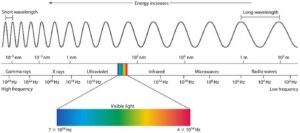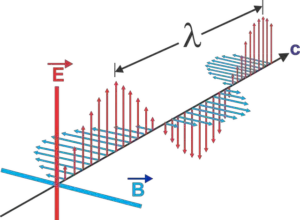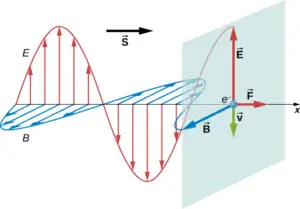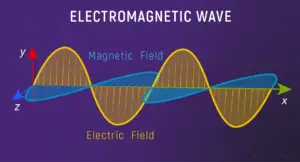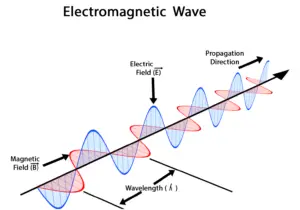What were Maxwell’s predictions?
James Clerk Maxwell’s equations of electromagnetism predicted the existence of electromagnetic waves, as well as several other important phenomena. Some of Maxwell’s predictions include:
- The existence of electromagnetic waves: Maxwell’s equations showed that changing electric and magnetic fields can generate waves that travel through space at the speed of light. He calculated that these waves would have a specific wavelength and frequency and that they would be capable of traveling through a vacuum.
- The constancy of the speed of light: Maxwell’s equations also predicted that the speed of electromagnetic waves (i.e., light) would be constant regardless of the motion of the observer or the source. This prediction contradicted the prevailing theory of time, which held that the speed of light would be affected by the motion of the observer.
- The unification of electricity and magnetism: Maxwell’s equations showed that electric and magnetic fields are closely related and that they can generate each other. This insight led to the unification of electricity and magnetism into a single force, known as electromagnetism.
- The existence of electromagnetic radiation beyond the visible spectrum: Maxwell’s equations predicted the existence of electromagnetic radiation at all wavelengths, including those beyond the visible spectrum (e.g., radio waves, X-rays, and gamma rays).
How did maxwell predict electromagnetic waves?
Maxwell predicted the existence of electromagnetic waves in 1865. According to Faraday’s law of electromagnetic induction:
A changing electric field is produced by a time-varying magnetic field.
Maxwell argued, based on his theoretical studies, that
A changing magnetic field is produced by a time-varying electric field.
This means that a change in either field (electric/magnetic) causes a change in the other field. Maxwell also demonstrated that these variations in electric and magnetic fields occur in mutually perpendicular directions and have wave-like properties. He was thus led to believe that a wave of electric and magnetic fields, both varying with space and time, should exist, with one providing the source of the other.
Explain clearly how Maxwell was led to predict the existence of electromagnetic waves.
Maxwell’s theory of electromagnetism, which he developed in the mid-19th century, mathematically described the behavior of electric and magnetic fields and their interaction with charged particles. His equations showed that electric and magnetic fields are closely related and can influence each other and that changes in one field can produce changes in the other.
Maxwell’s equations also predicted the existence of electromagnetic waves, disturbances that are produced when they travel through space at the speed of light and consist of oscillating electric and magnetic fields. Maxwell discovered that his equations allowed for solutions that described waves propagating through space, and he realized that these waves were the same as light waves.
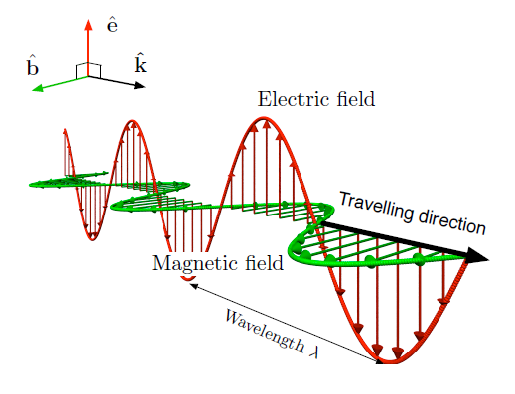
Maxwell could make this connection between electromagnetic waves and light waves because he was familiar with the work of other scientists who had studied the properties of light, such as Thomas Young and Augustin-Jean Fresnel. They had shown that light exhibited wave-like behavior, such as interference and diffraction, and Maxwell recognized that the equations he had developed for electromagnetic fields could also describe these same phenomena.
In 1864, Maxwell published his theory of electromagnetism, which included his prediction of the existence of electromagnetic waves. His equations accurately described the behavior of light and other forms of electromagnetic radiation, such as radio waves and X-rays, and laid the foundation for modern physics and electrical engineering.
Read Also
- Maxwell’s equations class 12: integral form, differential form, applications, and explanation
- Displacement current class 12: definition, modification, formula, and properties
- Electromagnetic waves class 12: definition, equation, graphical representation, and applications
Who proved the existence of electromagnetic waves?
The existence of electromagnetic waves was predicted by James Clerk Maxwell, a Scottish physicist, in the 1860s. He mathematically derived the existence of these waves from his equations of electromagnetism.

However, the first experimental proof of the existence of electromagnetic waves was provided by Heinrich Hertz, a German physicist, in 1887. Hertz demonstrated the existence of electromagnetic waves by creating and detecting radio waves in his laboratory.
Hertz’s experiments proved the existence of electromagnetic waves and opened the door to the development of wireless communication technology.
How did Maxwell predict the velocity of electromagnetic waves?
Maxwell’s prediction of the velocity of electromagnetic waves was based on his mathematical equations that describe the behavior of electric and magnetic fields. These equations showed that the electric and magnetic fields are intertwined and can influence each other.
In one of his equations, known as Ampere’s law, Maxwell found that a changing electric field produces a magnetic field. Conversely, in another equation, known as Faraday’s law of induction, he found that a changing magnetic field produces an electric field. These equations led him to realize that changes in electric and magnetic fields can create a self-sustaining cycle of change, which produces waves that propagate through space.
Maxwell then used his equations to calculate the speed at which these waves would propagate. He realized that the speed of the waves would depend on the properties of the electric and magnetic fields and on the properties of space itself. Specifically, he found that the speed of the waves would be equal to the reciprocal of the square root of the product of two fundamental constants of nature, known as the electric constant and the magnetic constant.
By using known values of these constants, Maxwell was able to calculate the speed of electromagnetic waves, and he found that it was approximately equal to the speed of light. This led him to conclude that light was a form of electromagnetic radiation and that all forms of electromagnetic radiation, including radio waves and X-rays, were fundamentally the same phenomenon.
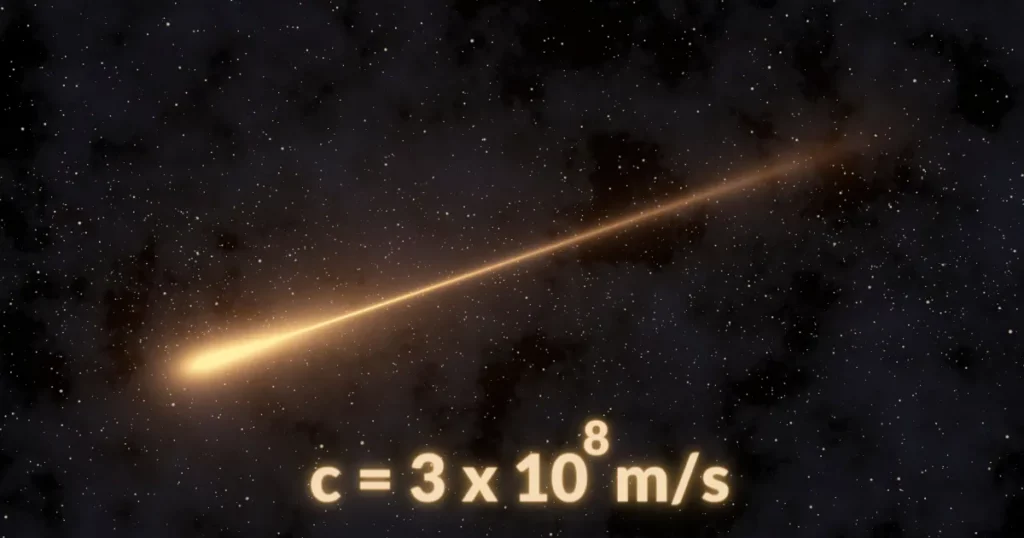
Maxwell’s prediction of the velocity of electromagnetic waves was a major breakthrough in physics, as it showed that light was not a separate phenomenon from electricity and magnetism, but rather a manifestation of the same underlying physical laws. This idea had profound implications for the development of modern physics and technology, and it laid the foundation for many of the technological advances of the 20th century, including radio, television, and wireless communication.
Calculate the speed of light using maxwell’s prediction of electromagnetic waves
Maxwell’s prediction for the speed of light, based on his equations, is given by the following equation:
$$c = \frac{1}{\sqrt{\epsilon_0 \mu_0}}$$
where c is the speed of light, ε₀ is the electric constant (also known as the permittivity of free space), and μ₀ is the magnetic constant (also known as the permeability of free space).
The values of these constants, according to the International System of Units (SI), are:
| \begin{aligned}\epsilon_0= 8.85418782 × 10^-12 F/m (\text{farads per meter})\\ \mu_0 = 1.25663706 × 10^-6 N/A^2 (\text{newtons per square ampere})\end{aligned} |
Substituting these values into the equation above, we get:
| $$c = \frac{1}{\sqrt{(8.85418782 \times 10^{-12})(1.25663706 \times 10^{-6})}}$$ |
c = 299,792,458 m/s
Therefore, Maxwell’s prediction for the speed of light is 299,792,458 meters per second, which is the same as the speed of light measured by experiments.
Frequently Asked Questions – FAQs
What are electromagnetic waves?
Electromagnetic waves are a type of energy that travels through space as an electric and magnetic field combination. When an electric field interacts with a magnetic field, these waves are produced. Simply, the electric and magnetic fields interact with each other to form electromagnetic waves.
What is the speed of light?
The speed of light is 299,792,458 meters per second.
Who proved the existence of electromagnetic waves?
The existence of electromagnetic waves was proved by Heinrich Hertz, a German physicist, in 1887.
Which is the most important prediction to emerge from Maxwell’s equations?
The existence of electromagnetic waves, which are (coupled) time-varying electric and magnetic fields that propagate in space, is the most important prediction to emerge from Maxwell’s equations.
Did Maxwell predict the speed of light?
Yes, Maxwell predicted the speed of light. According to Maxwell’s equations, light is an electromagnetic wave, and the speed of this wave is determined by the electric and magnetic properties of the medium through which it is traveling.
In a vacuum, Maxwell calculated that the speed of electromagnetic waves (i.e., light) would be approximately 299,792,458 meters per second or about 186,000 miles per second.
Maxwell’s prediction of the speed of light was significant because it contradicted the prevailing theory of time, which held that the speed of light would be affected by the motion of the observer or the source. Maxwell showed that the speed of light was a fundamental constant of nature that was independent of the motion of the observer or the source.
Stay tuned with Laws Of Nature for more useful and interesting content.


